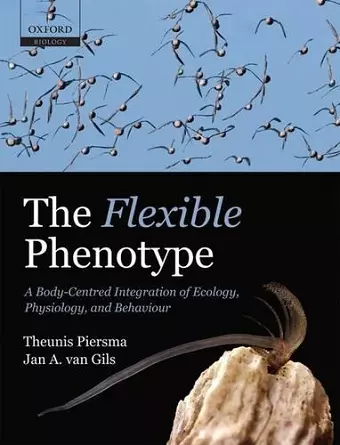The Flexible Phenotype
A Body-Centred Integration of Ecology, Physiology, and Behaviour
Theunis Piersma author Jan A van Gils author
Format:Paperback
Publisher:Oxford University Press
Published:4th Nov '10
Currently unavailable, and unfortunately no date known when it will be back

The Flexible Phenotype attempts a true synthesis of physiology, behaviour, and ecology by developing an empirical argument that describes the intimate connections between phenotypes and their environments. It portrays an ecological angle to the rapidly growing extended synthesis in evolutionary biology that incorporates developmental processes, self-organization, and the multiple dimensions of inheritance. The book starts with a synthesis of the principles guiding current research in ecophysiology, functional morphology, and behavioural ecology. Each aspect is illustrated with the detailed results of empirical work on as wide a range of organisms as possible. The integrated story of the flexible phenotype is woven throughout the book on the basis of the authors' long-term research on migrant shorebirds and their invertebrate prey. These birds travel vast distances from one environment to another, and the changing nature of their bodies reflects the varied selection pressures experienced in the course of their globe-spanning migrations. In essence, the authors argue for the existence of direct, measurable, links between phenotype and ecology, mediated by developmental processes. Their book outlines a more encompassing approach to evolutionary ecology, based on first principles in physiology, behaviour, and ecology. It aspires to encourage a further integration of ecology and physiology, as well as fostering a collaborative research agenda between ecologists, physiologists, and developmental biologists.
The book does an excellent job of covering a large range of interesting topics in an approachable way. * Dustin R. Rubenstein, Quarterly Review of Biology *
This book is not simply a list of examples of how integration has helped us understand some behavioral problem; rather, it is more of a guide for using integration to investigate behavior as a vehicle for phenotypic flexibility. The integration that facilitates this process is difficult to practice. For the work of Piersma and van Gils, it requires expertise in physiology, behavior, and ecology, and, as these authors point out, attempting to be a jack of all of these trades runs the risk of mastering none of them. With their new book, Piersma and van Gils clearly demonstrate mastery not only at the three components of their integration, but also at the very process of integration, which is long overdue to be recognized as a trade in and of itself. * Keith W. Sockman, PLOS Biology *
The text is written engagingly, where each of the ten richly illustrated and concise chapters adds more depth to the integrated story...The book is written for graduate level students and researchers in the fields of physiology, behavioural ecology, and evolutionary biology. However, due to its attractive writing and lay-out this book will also appeal to a more general audience. * Casper Kraan, Basic and Applied Ecology *
ISBN: 9780199597246
Dimensions: 247mm x 190mm x 13mm
Weight: 549g
250 pages